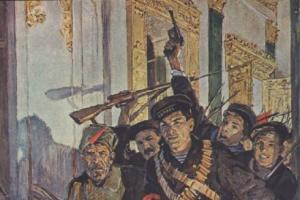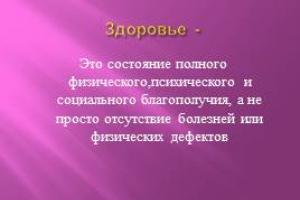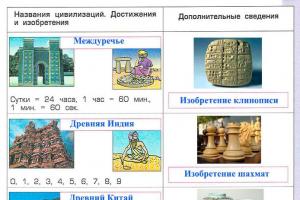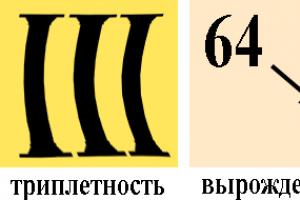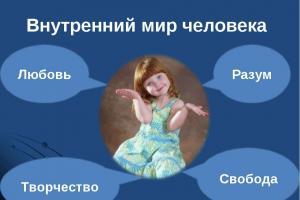Cast: soprano, tenor, baritone, choir luminaries (2 tenors, baritone, 2 basses), large choir, chamber choir, boys choir, orchestra.
History of creation
In 1934, Orff accidentally became acquainted with a catalog of Würzburg antiques. In it he came across the title “Carmina Burana, Latin and German songs and poems from the Benedict-Bewern manuscript of the 13th century, published by I. A. Schmeller.” This untitled manuscript, compiled around 1300, was located in Munich, in the royal court library, the custodian of which was Johann Andreas Schmeller in the mid-19th century. He published it in 1847, giving it the Latin title Carmina Burana, meaning “Songs of Beuern,” after the site of its discovery in the early 19th century in a Benedictine monastery in the foothills of the Bavarian Alps. The book was very popular and went through 4 editions in less than 60 years.
The title “riveted my attention with magical power,” Orff recalled. On the first page of the book there was a miniature depicting the wheel of Fortune, in the center of it was the goddess of luck, and at the edges were four human figures with Latin inscriptions. The man at the top with a scepter, crowned with a crown, means “I reign”; on the right, hurrying after the fallen crown, “reigned”; prostrate below - “I am without a kingdom”; on the left, climbing up, “I will reign.” And the first to be placed was a Latin poem about Fortune, changeable like the moon:
The wheel of fortune never tires of turning:
I will be cast down from the heights, humiliated;
meanwhile the other one will rise, rise up,
still ascended to the heights by the same wheel.
Orff will immediately imagine a new work - stage, with a constant change of bright contrasting pictures, with a singing and dancing choir. And that same night I sketched the chorus “I mourn the wounds inflicted on me by Fortune,” which then became No. 2, and the next, Easter morning, I sketched another chorus - “Sweet, welcome spring” (No. 5). The composition of the music proceeded very quickly, taking only a few weeks, and by the beginning of June 1934, Carmina Burana was ready. The composer played it on the piano for his publishers, and they were delighted with the music. However, work on the score was completed only 2 years later, in August 1936.

Orff offered to perform the cantata at the Berlin Music Festival the following year, but withdrew his offer after learning of the "destroying verdict of the highest authorities." Perhaps among these authorities was the famous German conductor Wilhelm Furtwängler, whose statement was repeated everywhere: “If this is music, then I don’t know what music is!” But most likely it was the high ranks of the Nazi party, who kept finding new reasons to ban the cantata. Finally, the head of the opera house in Frankfurt am Main obtained permission, and on June 8, 1937, the premiere took place in stage design. The success was extraordinary, but Orff called the victory Pyrrhic, because 4 days later a commission of important Nazi officials, having visited the performance, declared the cantata an “undesirable work.” And for 3 years it was not staged in any other city in Germany.
The medieval collection Carmina Burana contains more than 250 texts. Their authors were famous poets and fugitive monks, students and scholars who wandered from city to city, from country to country (in Latin they were called vagantes) and wrote in various languages - medieval Latin, ancient German, old French. Orff considered their use a means of “evoking the soul of the old worlds, the language of which was an expression of their spiritual content”; He was especially excited by the “captivating rhythm and picturesqueness of the verses, the melodious and unique brevity of the Latin.” The composer selected 24 texts of varying lengths - from one line to several stanzas, varying in genres and content. Spring round dances, songs about love - sublime, bashful and frankly sensual, drinking songs, satirical, philosophically free-thinking, make up a prologue entitled “Fortune - Mistress of the World” and 3 parts: “In Early Spring”, “In a Tavern”, “Court of Love” .
Music

“Carmina Burana” is Orff’s most popular composition, which he considered the beginning of his creative path: “Everything that I have written so far, and you, unfortunately, have published,” the composer told the publisher, “can be destroyed. My collected works begin with “Carmina Burana.” The author's definition of the genre (in Latin) is typical of Orff: secular songs for singers and choirs accompanied by instruments with stage performance.
The chorus of the prologue “O Fortuna” contains the musical grain of the entire cantata with the composer’s characteristic melody, harmony, texture - archaic and bewitching - and embodies the main idea - about the omnipotence of fate:
O Fortune,
Your face is lunar
Eternally changing:
Arrives
Descending
The day is not saved.
Then you're evil
That's good
Whimsical will;
And nobles,
And insignificant
You change the share.
The bright scene “In the Clearing” (No. 6-10), which concludes the 1st part, depicts the spring awakening of nature and love feelings; the music is permeated with the freshness of folk song and dance patterns. A sharp contrast is formed by No. 11, which opens the shortest 2nd part - the large baritone solo “Burning from within” to the text of a fragment of “Confession” by the famous vagant Archipitus of Cologne:
Let me die in the tavern,
but on my deathbed
over the school poet
have mercy, oh God!
This is a multifaceted parody: of a dying repentance (with turns of the medieval chant Dies irae - Day of Wrath, Last Judgment), of a heroic opera aria (with high notes and a marching rhythm). No. 12, tenor-altino solo with male choir “The Cry of the Roasted Swan” is another parody of funeral laments. No. 14, “When we are sitting in a tavern” - the culmination of revelry; the endless repetition of one or two notes is born of repetitions in the text (over the course of 16 bars, the Latin verb bibet is used 28 times):
The people, male and female, drink,
urban and rural,
fools and wise men drink
spendthrifts and misers drink,
The nun and the whore are drinking
a hundred year old woman drinks
a hundred-year-old grandfather drinks, -
in a word, drinks the whole wide world!
The 3rd part is exactly the opposite in mood, bright and enthusiastic. 2 soprano solos: No. 21, “On the unfaithful scales of my soul,” sounded entirely pianissimo, and No. 23, “My Beloved” - a free cadenza almost unaccompanied, with extremely high notes, broken by a double choir with soloists (No. 22) “Coming a pleasant time,” depicting ever-increasing love fun. A sharp contrast arises between the final chorus (No. 24) "Blanchefleur and Helen" - the culmination of mass rejoicing, and the tragic chorus No. 25 - the return of No. 1, "O Fortuna", forming an epilogue.
A. Koenigsberg
The source of the texts of this work was a medieval manuscript found at the beginning of the 19th century in a Benedictine monastery in the Bavarian Alps.
The composer left intact the original text of the 13th-century handwritten poetry collection, which included more than 250 texts in medieval Latin, Old German and Old French. He chose 24 poems about the changeability of fate, spring nature and love, drinking and satirical songs, as well as several hymn stanzas. All the poems were composed by vagantas, wandering medieval poets who sang earthly joys, glorified love, wine and ancient gods, and ridiculed sanctimonious church morality.
Orff defined the genre of his work as “Secular songs for singers and choirs accompanied by instruments with performance on stage.” However, a stage performance does not imply a sequential development of the plot. Unlike Catulli Carmina, Carmina Burana is not a plot drama, but a static theater of living pictures.
The cantata's performing apparatus is distinguished by its grandiose scope: a triple composition of a symphony orchestra with two pianos and an enlarged percussion group, a large mixed choir and a boys' choir, solo singers (soprano, tenor, baritone) and dancers.
The composition is based on the allegory of the wheel of Fortune, the goddess of fate. In medieval morality plays (moralizing theatrical performances), the wheel of Fortune personified the frailty of everything earthly, the fragility of human happiness. The choral prologue of Orff's cantata "Fortune, Mistress of the World" is repeated unchanged at the end of the work (No. 25, epilogue), which obviously symbolizes a full turn of the wheel. Between the prologue and epilogue there are three parts of the cantata: “In Spring”, “In the Tavern” and “Love Joys”.
IN Prologue- two choirs related in mood and expressive means. Their music and lyrics are harsh, embodying the inevitability of rock. The initial four-bar - measured, heavy chords of the choir and orchestra on an ostinato bass - is built on the turns of a Phrygian tetrachord. This is not only the epigraph of the entire work, but also its main intonation grain, which then grows in many other numbers. Typical features of Orff's mature style are concentrated here: ostinato rhythm, repeatability of melodic chants, reliance on diatonics, second-quart chords, interpretation of the piano as a percussion instrument, use of a simple strophic form. The form of strophic song dominates in the vast majority of cantata numbers. The exception is No. 9 - “Round Dance”. It is written in three-part form with a separate orchestral introduction. Theme-melodies, following each other, form a whole “wreath” of choral songs.
Using Using techniques associated with ancient folklore spells, the composer achieves a bewitching power of emotional impact.
The first part - “Spring” - consists of two sections: Nos. 3-7 and Nos. 8-10 (“In the meadow”). Here landscapes, dances, and round dances replace each other.The music clearly draws on Bavarian folk dance origins.It depicts the awakening of nature, love languor and contrasts sharply with the prologue. At the same time, in choruses No. 3 (“Spring is approaching”) and No. 5 (“Here is the long-awaited spring”), a melodic turn of the Phrygian mode, akin to the Prologue, can be heard. The orchestration is typical for Orff: noteworthy are the absence of strings with a large emphasis on percussion and celesta (No. 3), bells, ringing (No. 5).
Second part - « In the tavern" (Nos. 11-14) - is in bright contrast to the extremes surrounding it.This is a picture of the free life of reckless vagans,not thinking about the salvation of the soul, but delighting the flesh with wine and gambling.The techniques of parody and grotesque, the absence of female voices, and the use of only minor keys make this part similar to the prologue. The variant of the descending Phrygian tetrachord-epigraph here comes close to the medieval sequence “Diesirae».
No. 12, “The Cry of the Roasted Swan,” is distinguished by its outright parody: “I once lived on a lake and was a beautiful white swan. Poor, poor! Now I'm black, very toasted." The melody assigned to the altino tenor is based on the genre characteristics of the lament itself, but the grace notes give away its mocking irony.
The parodic lament is followed by an equally parodic sermon - No. 13, "I am the Abbot." The monotonous recitation of the baritone in the spirit of church psalmody is accompanied by the “screams” of the choir shouting “guard!”
The third part - “Love joys” - the brightest and most enthusiastic in the entire composition. In sharp contrast to the previous part, it echoes the first - both in mood and structure. It consists of two sections; in the second section(Nos. 18-24) tender lyrics are replaced by more stormy and frank outpourings of love.
The third part is based on a contrasting alternation of extended choral numbers with ringing accompaniment (with the constant participation of drums and piano) and short solos and ensembles - a cappellaor with chamber accompaniment (without piano and drums). Vocal colors become more diverse: a unison choir of boys (No. 15 - “Cupid flies everywhere”), a transparent soprano solo, doubled by a piccolo flute, against the backdrop of empty fifths of celesta and strings (No. 17 - “A Girl Was Standing”), an ensemble of male voices without instrumental support (No. 19 - “If a guy is with a girl”).
From the refined and exquisite lyrics of the first numbers, the figurative development rushes to the enthusiastic hymn of all-encompassing love in No. 24, “Hail, most beautiful!” According to the text, this is a hymn to famous beauties - Helen (the ancient ideal of beauty) and Blanchefleur (the heroine of medieval chivalric romances). However, the solemn glorification with bells ringing is suddenly interrupted by the return of the harsh music of the first choir "Oh Fortune, you are as changeable as the moon.”
Schematically the composition of the cantata looks like this:
|
Prologue |
||||
|
O Fortune, you are changeable like the moon I mourn the wounds that fate has inflicted on me |
Fort une plango vulnera |
|||
|
I part - “In Spring” (« Primovere») |
||||
|
Spring is coming The sun warms everything Here is the long-awaited spring Dance The forests are blooming |
Veris leta facies Omnia Sol temperat Ecce gratum Floret silva |
baritone solo |
||
|
2- th section - “In the meadow” |
||||
|
Give me some paint, merchant. Round dance / Those who go round and round If the whole world was mine |
Chramer, gip die varve mir Reie/Swaz hie gat umbe Were diu werlt alle min |
soprano solo |
||
|
II part - “In the tavern” (« Intaberna») |
||||
|
Burning inside The Roasted Swan's Cry I am the abbot Sitting in a tavern |
Estuans interius Olim lacus coloram In taberna quando sumus |
baritone solo tenor solo baritone solo |
||
|
III part - “Love joys” (« Courd amours») |
||||
|
Cupid flies everywhere Day, night and the whole world There was a girl standing |
Amor volat undique Dies, nox et omnia |
boys choir baritone solo soprano solo |
||
|
2- th section |
||||
|
In my chest If a guy is with a girl Come on, come on On the unfaithful scales of my soul Time is nice My most tender Hail, most beautiful one! |
Circa mea pectora Si puer cum puellula Veni, veni, venias Tempus est iocundum Ave formosissima! |
baritone solo and choir male sextet 2 choirs calling to each other soprano solo double choir with soloists soprano solo the whole cast performers |
||
|
№ 25 |
O Fortune |
|||
Latin carmina means songs, Burana- geographical designation. This is how the name of the place where the monastery is located translated into Latin sounds. In the Old Bavarian dialect - Boyern.
« Songs of Catullus, stage games » (1942) - Orff's second stage cantata. Her idea was inspired by a visit to the Sirmione peninsula near Verona in July 1930. Here stood the villa of the ancient Roman poet Gaius Valerius Catullus, who became famous for his love lyrics. Catulli Cartmina has a consistently developing plot. This is the eternal story of a deceived lover, a flighty beauty and a treacherous friend.
On the cover of an ancient manuscript, Orff’s attention was immediately attracted by the image of the wheel of Fortune, in the center of which is the goddess of luck herself, and at the edges are 4 human figures with Latin inscriptions: “I will reign,” “I reign,” “I reigned,” "I am without a kingdom."
Oh Fortune! I finally attended this masterpiece vocal, instrumental, blood-stopping performance - the cantata "Carmina Burana".
I saw it in the poster last season, but... I couldn’t even imagine what it was and how cool it was..
The name seemed oriental and this sculpture with a wheel also reminded me of something Buddhist...
And, having seen this name once, I decided to find out what it is?...
Here's what:
Yes, it’s not scary to die under such an introduction...
and since then I've been waiting for the day to hear it live..
Excellent performance, albeit relatively "chamber". Choir, orchestra, soloists - all at the highest level! Thank you very much!!
The choir of the Chelyabinsk theater is several times smaller, but the hall is also smaller).
Yes, perhaps somewhere... where there was absolutely piano, the acoustic capabilities of the hall were not enough, but when the main musical theme reached development, the impressions were overwhelming, you physically feel this music... And people were snooping nearby...
Once again Vladimir Borovikov pleased us; yes, most of all there were solo parts for baritone.
The soprano of Albina Gordeeva sounded softly. Pavel Chikanovsky - with a piercing refrain about a beautiful, but fried swan..(
I noticed that there were unusually high notes in the parts.
The mood of the cantatas changes from inspiring like a military march to subtle lyrical and tragicomic.
Carmina Burana- stage cantata by the German composer Carl Orff, based on his own libretto, based on medieval poems from the collection of the same name, written in 1935-1936. Without knowing this, it is difficult to believe that the work was written in the 20th century. Music so organically intertwined with its literary source, complementing and elevating it... The spirit of the early Middle Ages is maintained, Gothic castles, wars, love, which can always be the last, are imagined. It's authentic to perform this in a huge Gothic cathedral or amphitheater so that the sound flies into the heavens.
"Carmina Burana" is translated from Latin as "Songs of Boyern". The original manuscript of the collection (“Codex Buranus”) was found in 1803 in the Benedictine monastery of Beuern (Beuern, Latin Buranum; now Benediktbeuern, Bavaria). The libretto includes poems in both Latin and Middle High German. It covers a wide range of secular themes relevant both in the 13th century and in our time: the fickleness of luck and wealth, the transience of life, the joy of the return of spring and the pleasures of drunkenness, gluttony, gambling and carnal love.
This cantata is the composer’s most popular work: “Everything that I have written so far, and you, unfortunately, have published,” the composer told his publisher, “can be destroyed. My collected works begin with “Carmina Burana.” Apparently, it remains unsurpassed.
Of course, even here everything turned out to be not so simple. Orff is not just a German composer, he is a composer from Nazi Germany....and this work was held in high regard in the Third Reich (although there is information that, on the contrary, after the premiere the work was banned). Subsequently, he was able to somehow justify himself, assuring that he was a participant in the resistance movement. And the wheel of fortune lifted him up again...
1. Oh Fortune
O Fortune,
like the moon
you are changeable
always creating
or destroying;
you disrupt the movement of life,
then you oppress
then you exalt
and the mind is not able to comprehend you;
that poverty
that power -
everything is unsteady, like ice.
Fate is monstrous
and empty
the wheel has been running since birth
adversity and illness,
prosperity is in vain
and it leads to nothing
fate is on the heels
secretly and vigilantly
behind everyone like a plague;
but without thinking
I turn my unprotected back
to your evil.
And in health,
and in business
fate is always against me,
amazing
and destroying
always waiting in the wings.
At this hour,
without letting me come to my senses,
terrible strings will ring;
entangled in them
and each one is compressed,
and everyone cries with me!
"Carmina Burana" is a unique, interesting and justifiably popular theatrical masterpiece. "Boyern Songs" (this is the translation of the words "Carmina Burana") are a monument to secular art of the Renaissance. Handwritten collection of interest y Carl Orff, was compiled in the 13th century, and found at the beginning of the 19th century in a Bavarian monastery. Basically, these are poems by wandering poets and musicians ov, the so-called vagants, goliards, minnesingers. The collection's topics are very diverse. Parody and satire coexist here ical, love, drinking songs. Of these, Orff chose 24 poetic texts, leaving them untouched mi Old German and Latin, and adapted them for a large modern orchestra, vocal soloists and choir.
Carl Orff (1895 - 1982) is an outstanding German composer who went down in history as a bold reformer of traditional genres. He saw the main task in creating new stage forms. Experiments and searches led him to modern dramatic theater, as well as to mystery plays, carnival performances, folk street theater, and Italian comedy of masks.
"Carmina Burana" was first performed in June 1937 in Frankfurt am Main, starting a triumphal procession throughout Europe. For many years it has remained one of the most popular works in the world repertoire. Most often, the work is presented to the viewer in a concert performance, or as a plotless ballet performed to a soundtrack.
Premiere of the ballet “Carmina Burana” in Kazan

In the evenings, the platform in front of the Opera and Ballet Theater. M. Jalil is full of people - the international ballet festival named after Rudolf Nureyev is taking place in the theater. The premiere, which began the ballet forum, turned out to be somewhat unusual - the public was offered a mystery play.
From the vagants
After the third bell, there was nowhere for an apple to fall in the hall - even the last tier was packed, from which the view of the stage was by no means ideal. There were also people standing behind those sitting on the tiers; this was the audience who got into the hall with entrance tickets without seats. The beginning of the festival plus the premiere - how can you miss this? Over the past three decades, the Kazan public has become accustomed to going to the theater.
The premiere was timed to coincide with the beginning of the festival: a ballet specially created for the Kazan theater to the music of Carl Orff, “Carmina Burana or the Wheel of Fortune.” It was staged by choreographer from St. Petersburg Alexander Polubentsev.

Carl Orff's symphonic cantata, written for choir, soloists and orchestra, became one of the most striking numbers of the gala concert of the Chaliapin Festival. This time Orff's musical text became the basis for the ballet.
« My performance is not a ballet in the usual sense of the word. This is a mystery, a stage action that combines music, words, vocals, and video sequences.”,” the director clarifies. He does not specifically write a libretto; his ideal is a reflective viewer capable of co-creation.
To write this symphonic cantataCarl Orff's featcase: in an antique shop in his native Munich, he came across a bibliographic rarity. Their songs became the text part of the cantata.
 Songs- collection of vagants- completely different: funny, sad, philosophical, rough and sophisticated.
Songs- collection of vagants- completely different: funny, sad, philosophical, rough and sophisticated.
The vicissitudes of fate
The performance begins with the sound of rolling waves and the cries of seagulls, as if a window is opening slightly and a breeze seems to rush into the hall. But now the choral prologue “Oh, Fortune, Mistress of Fates” powerfully enters. Fortune, two-faced fate, the fate of a specific person and entire nations, strange turns of history - this is what became the basis of the performance.
Viewers will probably interpret each episode in their own way, and this is interesting. The wheel of Fortune spins, nothing is permanent - fate either lifts a person to transcendental heights, then throws him to the ground, then smiles at him again and begins to lift him up.

A bright, pastoral scene in which cute couples dance - cheerful and carefree. Girls throw wreaths into the river water, prosperity reigns in the world, it’s like eternal spring on earth. I just want to say: “The Holy Spring.” But gradually the picture of the world changes, sinful temptations creep out, and suddenly we see on stage a strange twitching creature in breeches and a high-crowned cap - a dictator. There is a terrible video sequence: the Fuhrer is going berserk, people are dying. This is how the wheel of Fortune turned for humanity one day.
Fortune (Alina Steinberg) has two faces. And it is unknown how she, so changeable, will turn towards us. But the Tempter (this vocal part is performed by baritone Yuri Ivshin) is balanced by angels (a touching children's choir), the Wanderer (Nurlan Kanetov) will not be afraid of the dictator (Maxim Potseluiko), and the bride (Kristina Andreeva) will find a groom.
Grief turns into joy, joy gives way to disappointment, there is no absolute happiness and absolute unhappiness, because the world is constantly changing, every second. And all these ups and downs are watched by a choir - a symbol of humanity.
 ForPolubentsev-directorin this work the mystery is more important, it is a street performance, it is nicer and closer to realizing the idea than ballet.
ForPolubentsev-directorin this work the mystery is more important, it is a street performance, it is nicer and closer to realizing the idea than ballet.
The action is structured as if we were watching stills from a movie, and this video sequence (the set design in the play was done by Maria Smirnova-Nesvitskaya, the lighting master was Sergey Shevchenko) turned out almost perfect.



